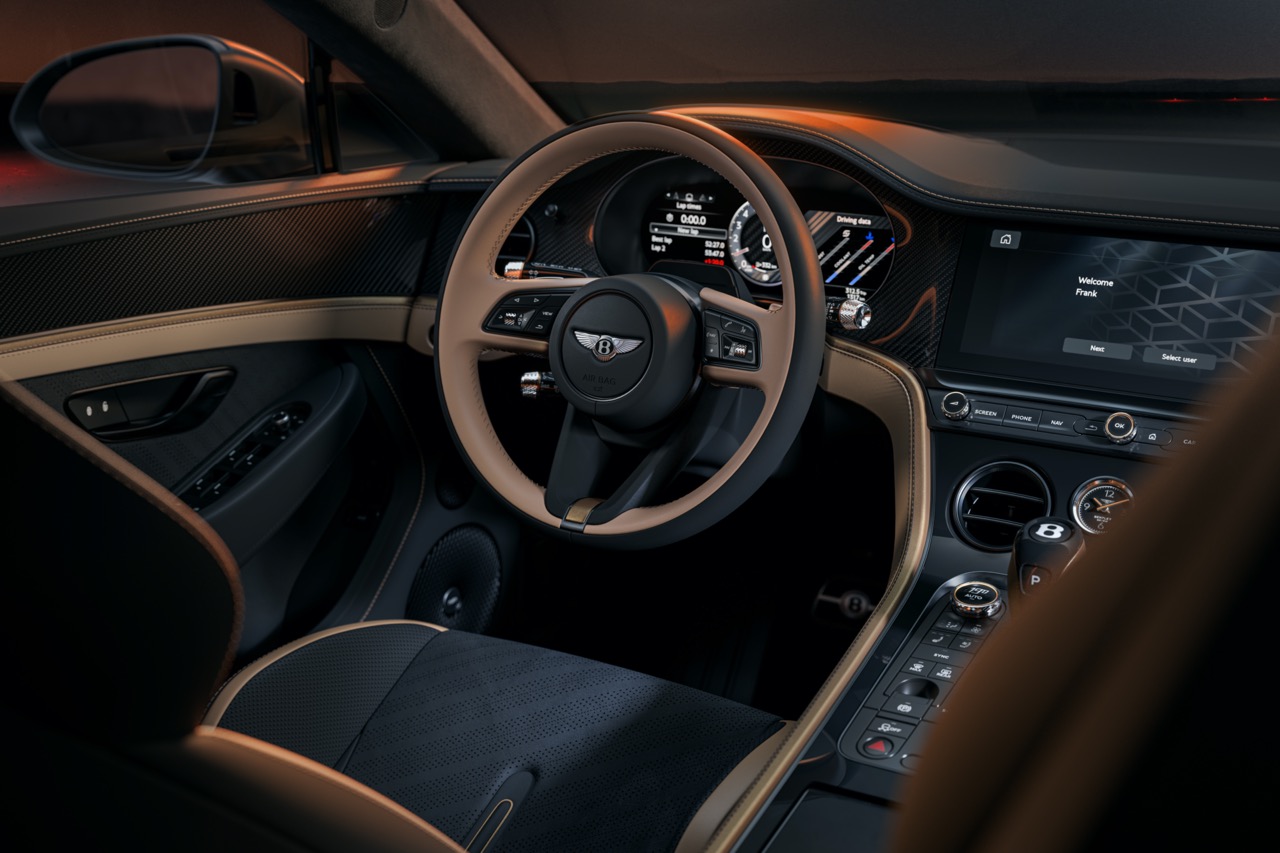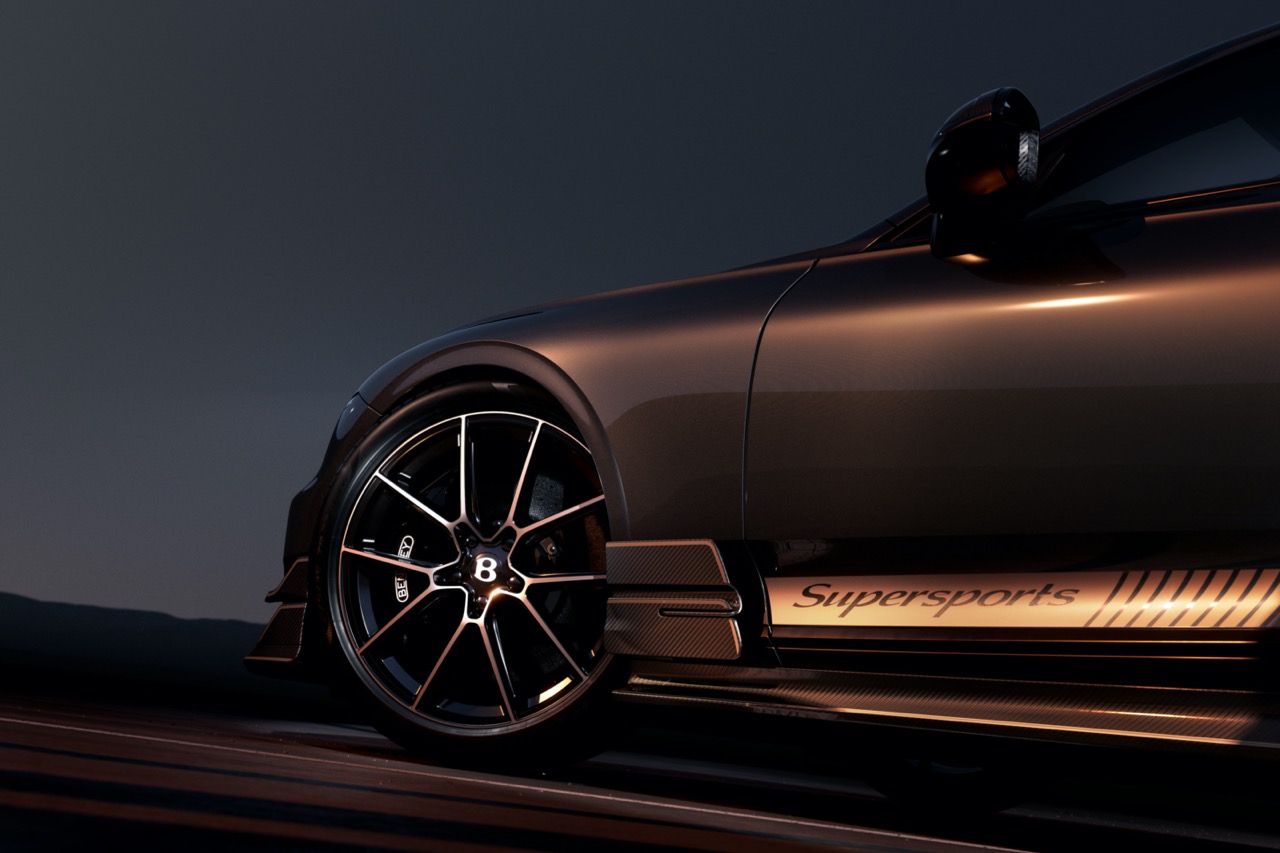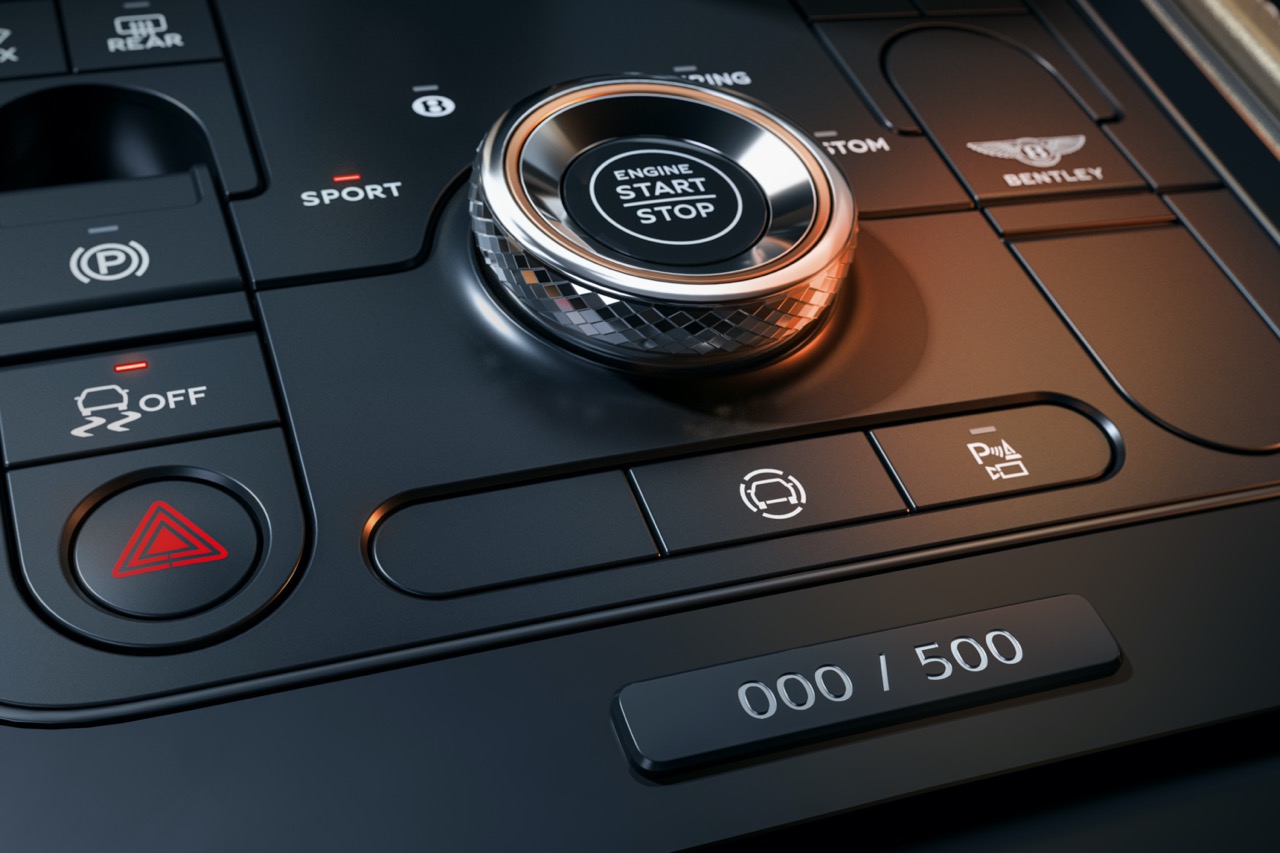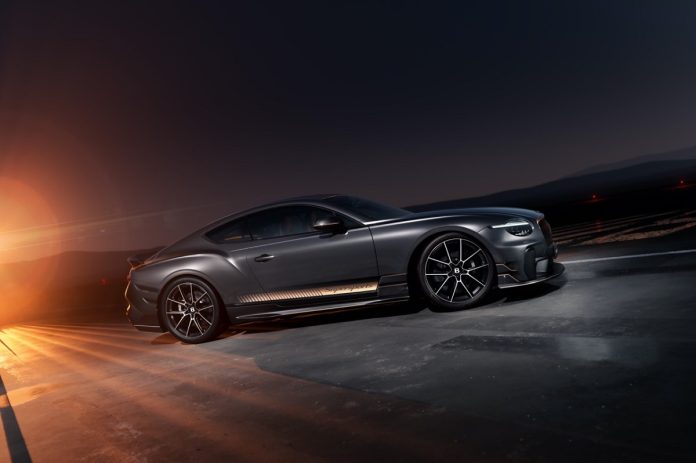Bentley has brought back the Supersports name for the fourth time, a full century after it first appeared, and the latest interpretation is the most driver-focused Continental GT the company has built. The new model sheds its grand-tourer formality for a simpler, lighter, rear-wheel-drive layout, now configured strictly as a two-seater and weighing under two tonnes.
Power comes from a reworked 4.0-litre twin-turbo V8 that produces 666PS and 800Nm, paired with an eight-speed dual-clutch gearbox. Carbon ceramic brakes, 22-inch forged wheels developed with Manthey Racing and a titanium Akrapovič exhaust are all fitted as standard, with Pirelli Trofeo RS tyres available for those wanting additional grip.
Every exterior element serves a purpose, with the design centred on weight reduction and meaningful aerodynamic gains. The redesigned front bumper houses Bentley’s biggest splitter ever fitted to a production road car, channelling airflow to the brakes and engine.

More carbon fibre appears around the body in the form of dive planes, extended sills, fender blades, a deeper diffuser and a fixed rear wing. These components generate over 300 kg more downforce than the GT Speed, while the carbon fibre roof lowers the mass and helps drop the centre of gravity.
Inside, the car takes on a new character with a stripped-back two-seat cabin. The sports seats are mounted lower and offer far stronger support, while the entire rear compartment has been removed and replaced with a carbon fibre and leather structure. Owners can personalise the cabin with monotone, duo-tone or tri-tone finishes, with leather, Dinamica and exposed carbon fibre forming the core materials.

Bentley’s Chairman and CEO, Dr Frank-Steffen Walliser, sees the Supersports as a return to more daring ideas within the brand. He considers the car a statement of intent—one that pushes for greater driver involvement while upholding Bentley’s craftsmanship. As the first full project to be completed under his leadership, he believes it shows how far the Continental platform can be pushed.
The idea for the new model began modestly in September 2024, when a small engineering proposal looked at the potential of a rear-wheel-drive Continental that weighed less than two tonnes. Within six weeks, the team had a prototype up and running, and its performance quickly justified the development of a full production model. The project needed a codename, so the engineers chose “Mildred”, inspired by Mildred Mary Petre, a racing pioneer who set endurance records in a Bentley 4½ Litre in 1929.

This new Supersports follows a legacy dating back to 1925, when the first Bentley Super Sports became the company’s earliest model to exceed 160km/h. Only 18 units were made. The name resurfaced in 2009 on a high-performance Continental GT and again in 2017 with a limited run of 710 cars. Each iteration has been the most extreme offering of its time, and the new version carries on that tradition but shifts its focus from brute force to sharper handling and reduced weight.
This is also the first time the Continental GT has been offered solely with rear-wheel drive. The V8 engine has been strengthened with larger turbochargers, making it the most power-dense unit in the brand’s history. The dual-clutch gearbox has quicker responses and tougher clutches, while downshifts under braking have been retuned for added stability. A bespoke titanium exhaust developed with Akrapovič gives the car a more expressive V8 soundtrack without artificial sound enhancement. Bentley targets a 0–100km/h time of 3.7 seconds and a top speed of around 310 km/h.

The chassis has been completely recalibrated. A widened rear track, rear-wheel steering and an active rear differential help deliver power with far greater immediacy. The traction, steering, suspension and stability systems all receive bespoke programming. The ESC system gives drivers a wider range of flexibility, from full support to complete deactivation, and the three new driving modes—Touring, Bentley and Sport—alter the car’s character from relaxed cruiser to focused performer.
The suspension uses aluminium double wishbones at the front and a multi-link layout at the rear, paired with air springs and new twin-chamber dampers. Bentley Dynamic Ride, the company’s 48V active anti-roll system, remains standard. The braking system uses record-breaking hardware, including 440 mm carbon silicon carbide discs with 10-piston calipers at the front and 410 mm discs with four-piston calipers at the rear.

The forged wheels can be matched with Pirelli P-Zero or Pirelli Trofeo RS tyres, with the latter allowing the car to corner around 30% faster than the GT Speed, generating up to 1.3 g of lateral force.
This Supersports is also the lightest Bentley in nearly eighty years, with almost half a tonne removed through rear-wheel drive, the deletion of hybrid components, a carbon roof and a fully reworked rear interior section with much less insulation. The aerodynamic parts, from the splitter to the rear wing, are engineered for real performance gains, all working together to deliver stability and downforce at speed.
The cabin remains focused on the driver, with lightweight sports seats that retain electric adjustment and heating despite their more aggressive design. The rear is now a functional carbon tub wrapped in leather, and the interior is finished with high-gloss carbon fibre as standard. Each Supersports is fitted with special badging and an individually numbered plaque on the centre console.

Production is limited to 500 units, and buyers may request specific numbers. The exterior palette includes 24 standard colours, with additional bespoke finishes available through Mulliner. Customers can commission unique striping and Supersports graphics, or choose from five pre-designed themes.
Carbon fibre parts can be left exposed in gloss, painted or pinstriped. The interior options include 22 main leather colours, 11 secondary tones and nine accent choices, along with optional aluminium finishes or Piano Black trim.

The debut car, presented in “Nightfall” specification, wears Anthracite gloss paint with Camel accents, matching stripes and a contrasting number on the grille. Inside, it pairs Beluga and Camel leather with subtle Bronze touches.








